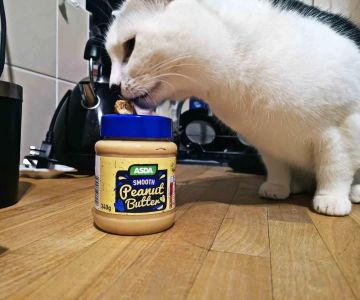Can Cats Eat Seaweed?
- 1 - Understanding Seaweed and Its Types
- 2 - Is Seaweed Safe for Cats?
- 3 - Potential Benefits of Seaweed for Cats
- 4 - Risks of Feeding Seaweed to Cats
- 5 - How to Safely Introduce Seaweed to Your Cat
- 6 - Real-Life Experience: Can Cats Eat Seaweed?
- 7 - Consult Hidden Brook Veterinary for Expert Advice
1 - Understanding Seaweed and Its Types
Seaweed is a type of marine plant that grows in oceans and seas, and it comes in many varieties, including nori, kelp, wakame, and dulse. It’s often used in human food, especially in Asian cuisines, such as sushi rolls. While humans enjoy seaweed for its nutritional value, pet owners may wonder if it’s safe for cats to consume. Seaweed is rich in fiber, vitamins, and minerals, but how do these benefits translate for cats?
2 - Is Seaweed Safe for Cats?
In general, small amounts of seaweed can be safe for cats, but like all human foods, it should only be offered in moderation. While some seaweed varieties contain nutrients that could be beneficial to cats, it’s important to understand that not all types of seaweed are appropriate for feline consumption. Additionally, the way seaweed is prepared or served can affect its safety for cats.
2.1 Safe Seaweed Varieties for Cats
Some types of seaweed, such as nori and kelp, are generally safe for cats in small quantities. These types are sometimes found in pet foods or treats formulated to provide nutritional benefits. However, always check the source of the seaweed, as it should be free of harmful additives and preservatives.
2.2 Seaweed in Pet Food
Many premium pet foods contain seaweed as an ingredient because of its nutritional profile. Seaweed provides a natural source of iodine, which is essential for thyroid function, and other minerals that support overall health. If you’re concerned about the safety of giving your cat seaweed directly, look for pet foods that already include it as a formulated ingredient.
3 - Potential Benefits of Seaweed for Cats
When given appropriately, seaweed may offer several potential health benefits for cats. Some of these benefits include:
3.1 Source of Vitamins and Minerals
Seaweed is rich in vitamins like A, C, and K, as well as minerals like calcium and magnesium. These nutrients can support your cat’s overall health, especially in older cats or those with specific dietary deficiencies. For example, iodine found in seaweed helps regulate the thyroid, while calcium supports bone health.
3.2 Digestive Health
Seaweed is high in fiber, which can aid in digestion and support gastrointestinal health. In some cases, adding a small amount of seaweed to your cat’s diet may help with constipation or promote a healthy gut. However, too much fiber could lead to digestive upset, so moderation is key.
3.3 Supports Skin and Coat Health
The omega-3 fatty acids found in seaweed may help promote a healthy coat and skin. Omega-3s are well-known for their anti-inflammatory properties and may improve the condition of dry or irritated skin in cats.
4 - Risks of Feeding Seaweed to Cats
While seaweed can offer benefits, there are also some risks associated with feeding it to cats. It’s essential to be aware of these risks to ensure your pet stays safe and healthy.
4.1 Toxicity of Certain Seaweed Types
Not all seaweed is safe for cats. Some varieties, particularly those from polluted waters, can contain toxins that may harm your pet. For example, certain types of algae can cause poisoning if consumed in large amounts. It’s crucial to ensure that any seaweed offered to your cat comes from a safe, reliable source.
4.2 High Iodine Levels
Seaweed, especially kelp, is rich in iodine, which can be beneficial in small amounts. However, excessive iodine intake can lead to thyroid issues in cats. If your cat consumes too much seaweed, it could cause an imbalance in thyroid function, leading to hyperthyroidism or hypothyroidism.
4.3 Choking Hazard
Another risk of feeding seaweed to cats is the potential for choking. If the seaweed is not prepared properly, it could become a choking hazard. Always ensure the seaweed is cut into small, manageable pieces if you choose to offer it to your cat.
5 - How to Safely Introduce Seaweed to Your Cat
If you’re interested in giving your cat seaweed, it’s important to introduce it slowly and carefully to monitor for any adverse reactions. Here’s how you can do it safely:
5.1 Start Small
Introduce seaweed in small amounts. Start with a tiny piece and observe your cat for any signs of digestive upset or allergic reactions. If your cat seems to enjoy it and doesn’t have any adverse reactions, you can gradually increase the amount.
5.2 Use Seaweed-Based Cat Treats
If you’re unsure about giving your cat raw seaweed, consider using commercially available seaweed-based cat treats. These treats are formulated specifically for pets and contain the right amount of nutrients without the risks of overfeeding or contamination.
5.3 Monitor for Reactions
After giving your cat seaweed, monitor their behavior and health for any changes. If you notice signs like vomiting, diarrhea, or lethargy, discontinue use and consult with your veterinarian.
6 - Real-Life Experience: Can Cats Eat Seaweed?
Take the example of Jane, a cat owner who noticed that her senior cat, Felix, had begun experiencing digestive issues. After consulting with her vet, Jane decided to try adding a small amount of seaweed to Felix’s diet to help with his digestion. Within a few days, she noticed an improvement in his bowel movements, and Felix seemed more comfortable. However, after a week of feeding him a bit of seaweed, Jane noticed that Felix became a bit more lethargic. Concerned, she stopped giving him the seaweed and found that his energy levels returned to normal. This experience taught Jane the importance of moderation and always monitoring her cat’s health when introducing new foods.
7 - Consult Hidden Brook Veterinary for Expert Advice
If you’re ever unsure about what’s safe for your cat to eat, it’s always a good idea to consult with a veterinarian. Hidden Brook Veterinary is here to offer expert advice on nutrition, health concerns, and the best practices for caring for your pets. Whether it’s seaweed or any other new food, we can help guide you in providing the best care for your feline friend.












